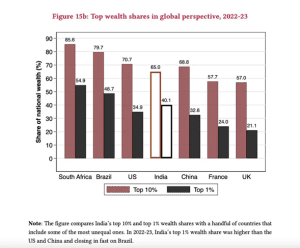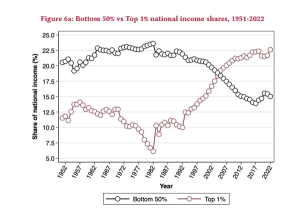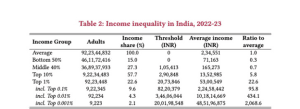WSDP Bulletin (22/03/2024)
(Newspapers, PIB and other important sources)
Prelim and Main
1. Sri Lanka to secure likely six year-moratorium on debt owed to India, Paris Club READ MORE
2. India displayed ‘steadfast dedication’ to Palestine cause: Arab League ambassador READ MORE
3. Supreme Court stays IT Ministry’s notification establishing fact check unit under PIB to identify fake news READ MORE
4. SC forms expert panel to balance Bustard conservation with sustainable energy goals READ MORE
5. No microplastics: new rules queer the pitch for ‘biodegradable’ plastics READ MORE
6. SC dismisses applications to stay appointments of ECs Sukhbir Singh Sandhu, Gyanesh Kumar READ MORE
7. Kejriwal arrested: What is the Delhi excise policy case, and what is the Delhi CM accused of? READ MORE
8. World Forest Day 2024: Indian forests are losing their ability to absorb carbon dioxide due to climate change READ MORE
9. Kaziranga: Two new species identified READ MORE
Main
GS Paper- 1
1. Politics of positive discrimination for the idea of India READ MORE
2. Violence, homelessness, and women’s mental health READ MORE
3. Navigating the global waterscape, its challenges READ MORE
4. Governing interstate rivers in India: Need for federal consultation, clarity, and cooperation READ MORE
5. Safeguarding food security: The vital role of water READ MORE
GS Paper- 2
POLITY AND GOVERNANCE
1. Should judges accept official posts after retirement? READ MORE
2. That SC has to remind Ravi to follow the Constitution, underlines how much the guv’s office needs reining in READ MORE
3. Transparency is overrated in realpolitik in India READ MORE
4. Demographics and ELECTORAL Dynamics READ MORE
5. Waiting for the public distribution system to work READ MORE
6. A fait accompli on EC appointments READ MORE
SOCIAL ISSUES
1. Skill India Mission: Short Courses, No Employable Skills and a Lack of Jobs READ MORE
2. How Maharashtra’s amendment to the Right to Education Act will foster ghettoization READ MORE
INTERNATIONAL ISSUES
1. Why did Pakistan carry out airstrikes in Afghanistan? | Explained READ MORE
2. Water, an instrument to build world peace READ MORE
GS Paper- 3
ECONOMIC DEVELOPMENT
1. Growth, well-being and distribution in the last decade – II READ MORE
2. Inequality in India: Job creation, tax reforms vital to arrest the slide READ MORE
3. The India Stack as a Potential Gateway to Global Economic Integration READ MORE
4. Assessing the Impact of Climate Change on Public Health and Nutrition Security READ MORE
ENVIRONMENT AND ECOLOGY
1. Strengthening water governance in the face of climate change READ MORE
SCIENCE AND TECHNOLOGY
1. Water footprint of emerging technology: A need for concern? READ MORE
INTERNAL SECURITY
1. New capabilities: India and the Agni-V with MIRV READ MORE
2. Why India’s defence deals with the Global South matter READ MORE
DISASTER MANAGEMENT
1. Mitigating risks in infrastructure development READ MORE
GS Paper- 4
ETHICS EXAMPLES AND CASE STUDY
1. Did Abhijit Gangopadhyay’s actions uphold the judiciary’s dignity and help preserve people’s faith in it? READ MORE
2. India’s voters deserve a bond — of probity READ MORE
Questions for the MAIN exam
1. Water scarcity leads to the poor functioning of ecosystems, threatens food and water security, and, ultimately, affects peace. Discuss how the initiative ‘Water for Peace’ is an instrument to build world peace.
2. Strengthening institutional mechanisms and accommodating political sensitivities are key to finding a long-term solution for Interstate Water Disputes governance in India. Comment.
3. In recent years, the National Human Rights Commission of India has largely abdicated its role, but the institution cannot be given a free pass to continue to abuse its mandate by its partisan silence. Comment.
4. While amending the law pertaining to political funding, India needs to ensure that it doesn’t revert to the old system of cash receipts, which will allow the return of corruption and muscle power to public life. In the light of recent Supreme Court Judgement, critically analyse the statement.
5. Fostering inclusive and equitable growth is paramount in addressing the root causes of global instability and conflict. In this regard, the role of technology and innovation cannot be overlooked in shaping the future trajectory of global affairs. Comment.
6. At the heart of Mission Karmayogi lies a profound philosophical ethos inspired by the Bhagavad Gita, advocating for duty and action without attachment to outcomes. Comment.
7. In an era where the dynamics of governance and public service are evolving rapidly, India has embarked on an ambitious journey to transform its civil service with the launch of the Mission Karmayogi scheme. Discuss.
QUOTATIONS AND CAPTIONS
- Mutual tolerance is a necessity for all time and for all races.
- If a judge accepts a post-retirement appointment from the government, people are bound to doubt whether their judgments were delivered for extraneous reasons.
- The theme this year is ‘Water for Peace’ pointing to the need for better water security, sustainable agricultural production, and environmental integrity.
- Water scarcity leads to the poor functioning of ecosystems, threatens food and water security, and, ultimately, affects peace.
- In the context of climate change-related pressures, the world also needs to foster improved cooperation over water-sharing.
- The fight for political transparency is important for India’s institutions, but transparency is not the driving factor when it comes to political hegemony.
- The National Food Security Act 2013 intends to ensure food security for weaker sections and faces formidable challenges in rural areas.
- The displacement of populations, biodiversity loss, food insecurity on a global scale, and new health risks are obvious consequences of the climate changes taking place everywhere.
- Courts across the country had to remind the ED that it could not go on expeditions in search of crime. It’s time courts stood their ground and stopped the abuse of PMLA.
- With the increasing prevalence of emerging technologies, there arises a necessity for deeper scrutiny of their water footprint.
- Strengthening institutional mechanisms and accommodating political sensitivities are key to finding a long-term solution for Interstate Water Disputes governance in India.
- A collective will to integrate climate resilience into urban water governance and embrace innovative management strategies is imperative to secure continuous, clean water for all.
- As water scarcity intensifies, its ripple effects cascade through food systems, directly impacting agricultural productivity and food security.
ESSAY TOPIC
- Mutual tolerance is a necessity for all time and for all races.
50-WORD TALK
- Lancet study’s finding that India’s fertility rate has fallen below replacement levels foreshadows a demographic disaster. India’s per capita income is just $2,600, and population is already ageing. Elder care will increasingly become government’s unaffordable responsibility. This should end the loaded talk of population explosion and policies to control it.
- Zomato’s new plan for a pure vegetarian fleet is tone-deaf. It shows start-up founders come up with ideas without understanding their social realities, fallout. Adding ‘pure’ prefix to vegetarianism is loaded. Segregation measures reflect a mindset. How are tech start-ups any different from RWAs who issue notices against non-vegetarian residents?
Things to Remember:
- For prelims-related news try to understand the context of the news and relate with its concepts so that it will be easier for you to answer (or eliminate) from given options.
- Whenever any international place will be in news, you should do map work (marking those areas in maps and exploring other geographical locations nearby including mountains, rivers, etc. same applies to the national places.)
- For economy-related news (banking, agriculture, etc.) you should focus on terms and how these are related to various economic aspects, for example, if inflation has been mentioned, try to relate with prevailing price rises, shortage of essential supplies, banking rates, etc.
- For main exam-related topics, you should focus on the various dimensions of the given topic, the most important topics which occur frequently and are important from the mains point of view will be covered in ED.
- Try to use the given content in your answer. Regular use of this content will bring more enrichment to your writing.




